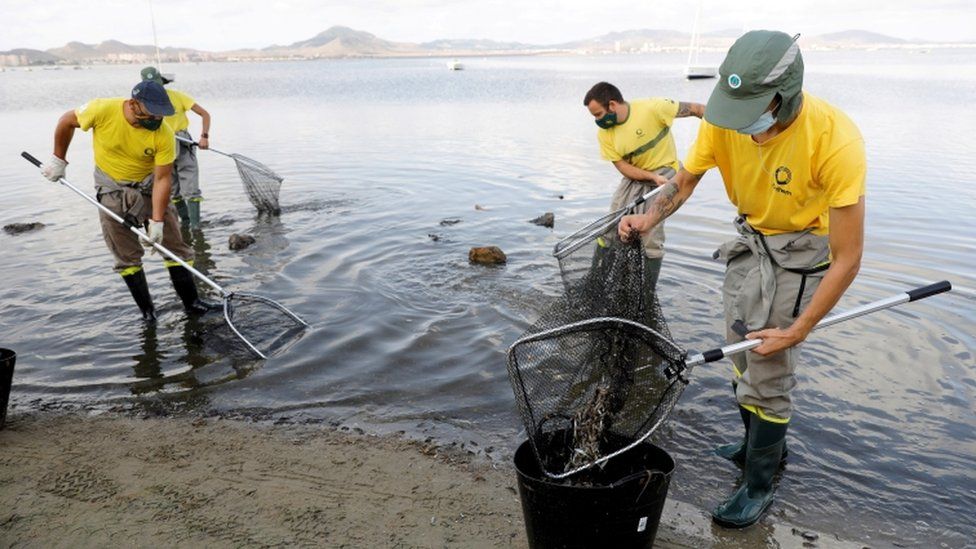Disaster area considered as tonnes of dead fish wash up on shores of Spanish lagoon
Local officials blame recent heatwave but scientists say pollution a factor

Your support helps us to tell the story
From reproductive rights to climate change to Big Tech, The Independent is on the ground when the story is developing. Whether it's investigating the financials of Elon Musk's pro-Trump PAC or producing our latest documentary, 'The A Word', which shines a light on the American women fighting for reproductive rights, we know how important it is to parse out the facts from the messaging.
At such a critical moment in US history, we need reporters on the ground. Your donation allows us to keep sending journalists to speak to both sides of the story.
The Independent is trusted by Americans across the entire political spectrum. And unlike many other quality news outlets, we choose not to lock Americans out of our reporting and analysis with paywalls. We believe quality journalism should be available to everyone, paid for by those who can afford it.
Your support makes all the difference.Spain's government is considering declaring a disaster area after thousands of dead fish washed up on the shores of a large saltwater lagoon.
Tonnes of fish and crustaceans have been found on the beaches of Mar Menor in southeastern Spain - one of the largest lagoons in Europe.
A blistering heatwave hit Spain last week and local officials are blaming the extreme temperatures for killing the fish, although some scientists say pollution from local farming has degraded the water quality of the lake.
Blue crabs and shrimp are among some of the creatures found by volunteers and campaigners.
The water in the lagoon, once a hotspot for tourism and sanctuary for marine life, has deteriorated in recent years. There have been mass fish die-offs in 2016 and 2019.
Local residents have held protests to demand action and prosecutors in Murcia are investigating possible.
Spanish media reports that the regional government has submitted a request to officials in Madrid calling for a Mar Menor to be categorised as a disaster area.
Residents began seeing dead fish and crustaceans on the Monday before last.
"They are still washing up today. We calculate that some 20 tonnes have died to date," Jose Luis Garcia, director of the World Wildlife Fund's marine programmes in Spain, said last week.
While the regional government blamed the deaths on recent high temperatures, ecologists have warned for years that runoff from nearby agricultural facilities and pollution from urban development has severely degraded the water quality.
"People call it the green soup," Ramon Pagan of the Pact for the Mar Menor pressure group, explained. "It's caused by an excess of fertilisers in the water...particularly from intensive agriculture."
High levels of phosphates and nitrates in the water cause huge blooms of algae to flourish.
These block out sunlight from penetrating the water and reduce oxygen levels below the surface, eventually suffocating the marine life.
Scores of protesters wearing 'SOS Mar Menor' t-shirts gathered on the shore and chanted "We want solutions."
Additional reporting by Reuters
Join our commenting forum
Join thought-provoking conversations, follow other Independent readers and see their replies
Comments